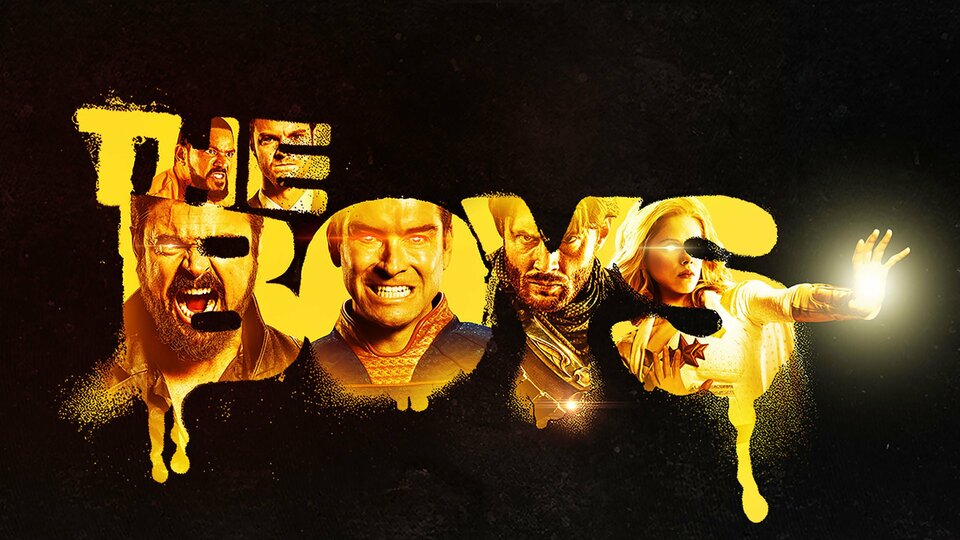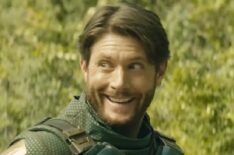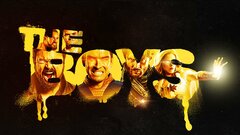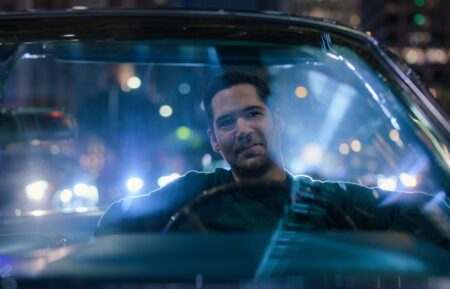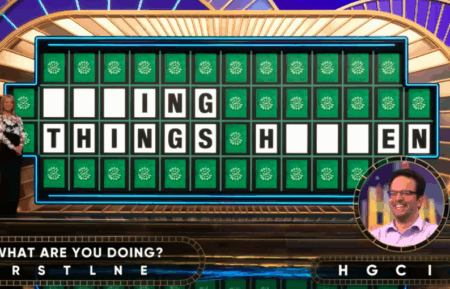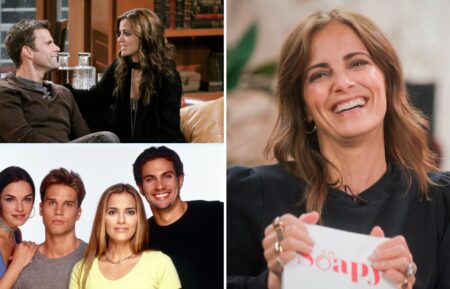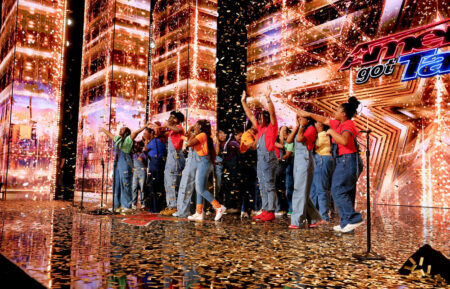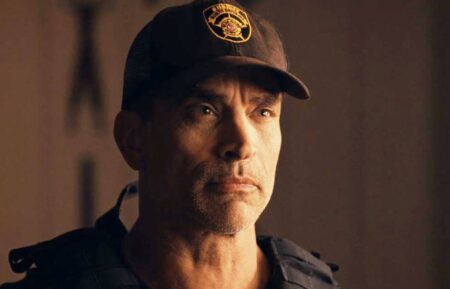‘The Boys’ Director on Tackling Butcher’s Waking Nightmare & Black Noir’s Animated Story
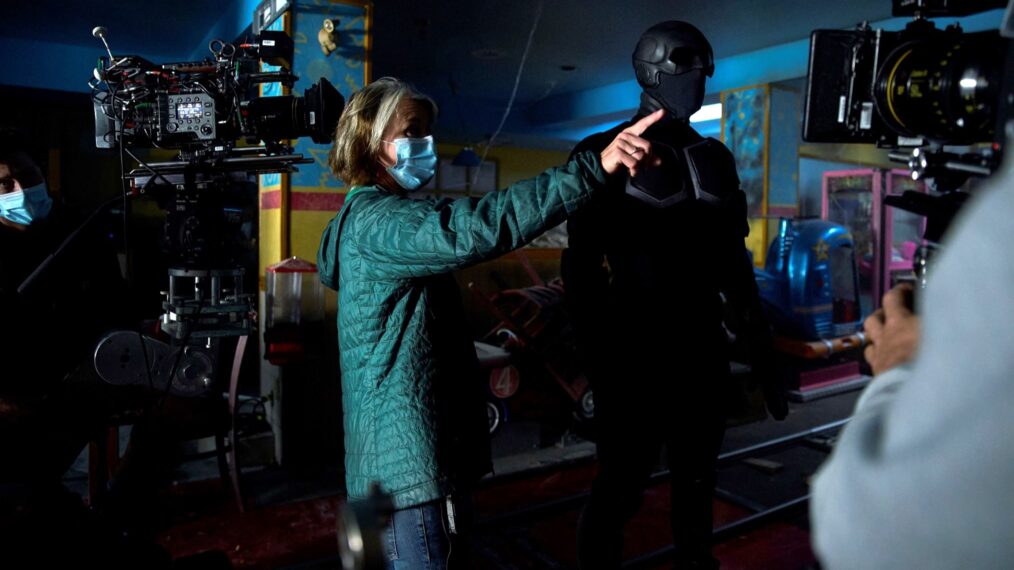
Q&A
[Warning: The following contains MAJOR spoilers for The Boys Season 3, Episodes 7 & 8, “Here Comes a Candle to Light You to Bed” & “The Instant White-Hot Wild.”]
The Boys is without a doubt one of TV’s wackiest shows, but it can also deliver one of its most poignant with dark trauma-filled storylines like in Season 3’s revealing entry, “Here Comes a Candle to Light You to Bed.”
Directed by Sarah Boyd (This Is Us, For All Mankind), the entry sees Boys’ vigilante leader Billy Butcher (Karl Urban) trapped in one of Mindstorm’s (Ryan Blakely) haunting visions. Experiencing his past in flashes, Butcher is haunted by memories of his younger brother Lenny (Jack Fulton). Forced to reckon with the mistakes he’s made, the unending fog allows viewers further insight into the violent opposer of Supes, just as the Black Noir’s (Nathan Mitchell) history is shared through the lens of cartoon characters making for an unconventional, yet moving story.
Below, Boyd opens up about tackling two of the season’s biggest curve-balls, shooting back-to-back episodes, and more on her process.
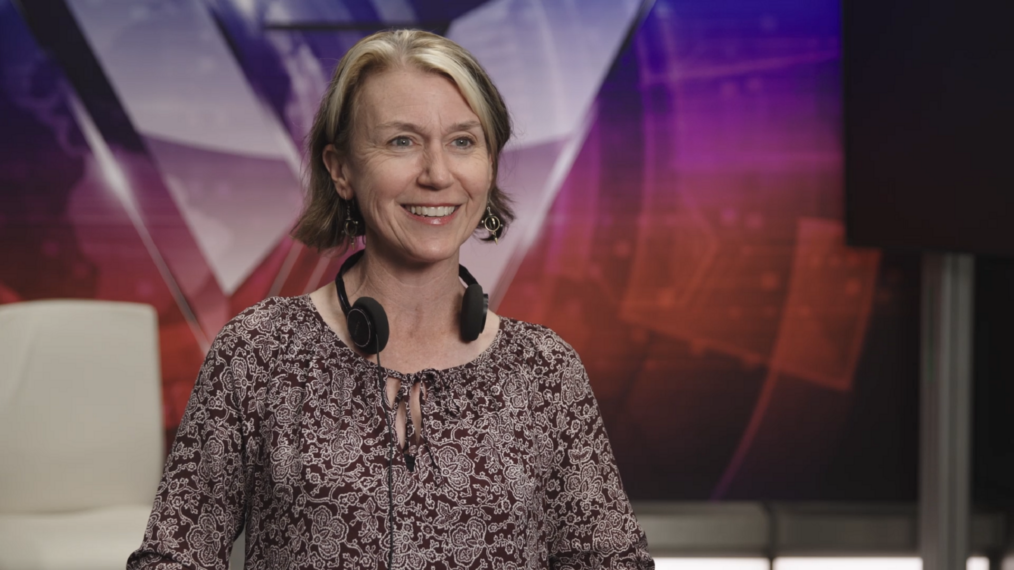
(Credit: Courtesy of Prime Video)
You previously directed a Season 2 episode of The Boys, how did you get approached to tackle the final two installments of Season 3?
Sarah Boyd: They asked me back and said, “um, what’s your availability? We wanna make sure to fit you in.” And I said, “well, you know, what I would really love to do is the season finale.” They said, “sure let’s make it happen.” So it turned out to be a block. I didn’t know whether it’d be a single episode or two, but it was [the] final episodes. They wanted someone whose work they knew and trusted to do it. So sometimes that would be, Phil Sgriccia the producing director, but instead, they had him do the first block.
Episode 7 offers viewers unconventional storytelling methods in a show that’s already so unconventional. What was exciting about getting to tackle those aspects of Season 3?
Parts of Episode 7 were delving into Butcher’s backstory through his Mindstorm mind trap sequences and then Black Noir’s animated friends. Those were the most exciting to prep and think about how to make come to life. The animated sequences started quite early. I wasn’t even in Toronto yet. I wasn’t even technically working. And they were looping me into some initial concept discussions with the animation houses because we needed to get going really early. Also just finding that location was something we needed to do early as well. And we knew we needed to film it as early on in our block as possible.
So my first day of shooting was the live-action parts of the Black Noir sequence. It’s all part of Eric [Kripke]’s bizarre and fascinating imagination and of course the comics. But Eric just dove straight into this and this is a career-long ambition to do some animation. And this seems like the perfect way to do it and how wacky that Noir would have this kind of imaginary friends. So we talked a bit about how the animation would look, how they should be cute, but also have this really gross, violent, disturbing side to it.
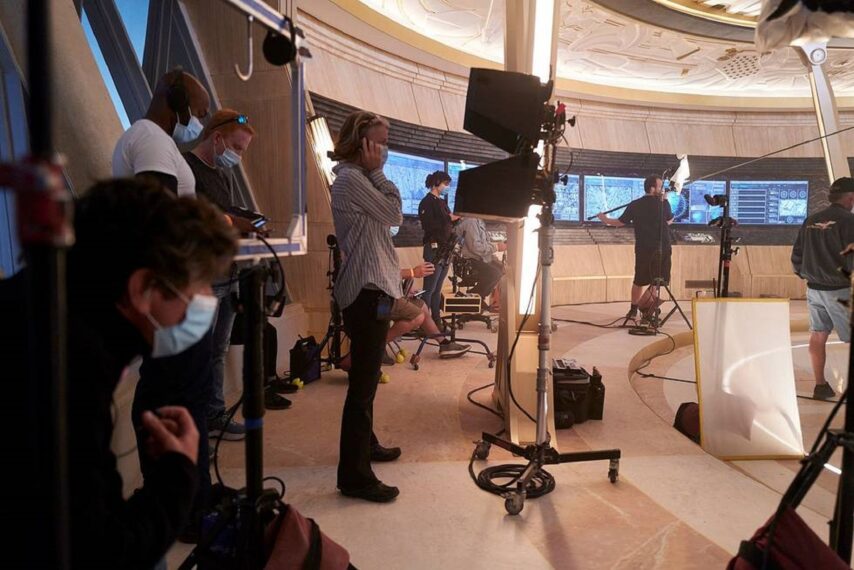
(Credit: Courtesy of Prime Video)
What went into creating the animations? What was that process like as a director?
While we were doing the animation they were also prepping the Nicaragua scenes. They hadn’t actually shot those scenes when I started, even though they’re in prior episodes. So that was a, a significant week-long shoot that was delayed, I think, because of actor availability. So, it was a bit of a chicken and egg dance where when we were designing the backdrops, we wanted to make sure they were close enough to what Phil was going to be shooting so that it was clearly part of that memory [for Noir].
We could take creative license because it was animated and in Noir’s memory. Then doing the live-action our first day, we had long conversations about how to make the lighting work when the show is on versus when the show is off, and so we filmed that in two different looks.
Butcher’s flashbacks were also haunting in a different way. How did that come together and what was it like getting to capture one of the show’s more dramatic storylines?
It was a lot of work, a lot of work, but I think it really was quite successful. At first, I was like, this is wackadoodle crazy. And then I was like, it’s wackadoodle crazy and that’s perfect for the Butcher stuff. The Butcher sequence was, for me, one of the most satisfying sequences to bring to life. We talked a lot about how to have Butcher be able to be there, but have it be effective. There are other examples where people enter their own flashbacks in other TV shows and movies, and we wanted to differentiate it, and part of the reason is because it’s not a flashback, it’s a mind trap.
He’s trying in vain to talk some sense into his younger self or to reach out to his brother, but he’s a silent witness to these horrible things that he feels guilty about from his past. So you visualize how to show that. He tries to open the door and he goes right through it. He tries to push his father, but he goes through it. We wanted to differentiate it from that a bit and have him be clearly there.
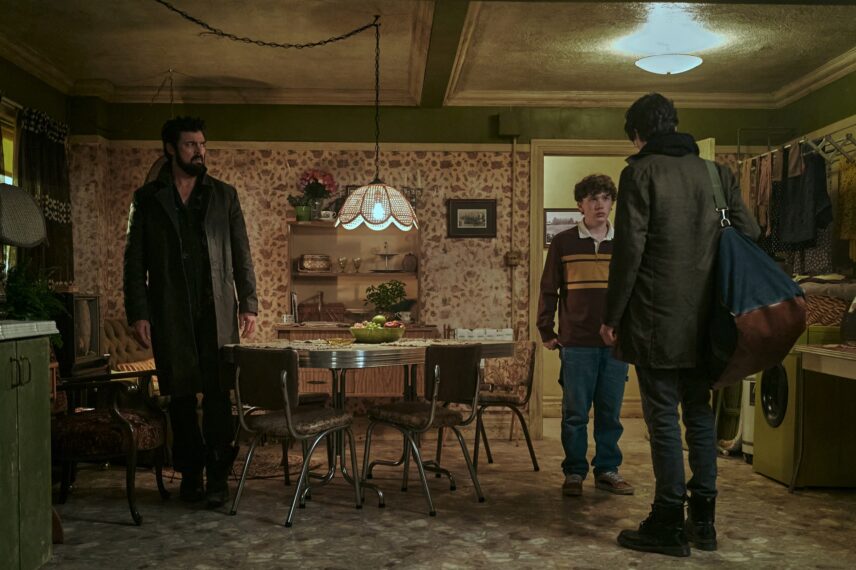
(Credit: Prime Video)
The real challenge was whether he would be in one environment and then he would suddenly be in another environment. And we did that. We took great pains to try to make that happen seamlessly with either a turn or with a visual effect where we literally did a slow dissolve with a visual effect. In the end, I always [wanted it] done editorially because I have an editing background and I had this strong feeling that it was going to end up being more effective editorially. And the editor really added lovely ideas.
Butcher’s dynamic with his brother mirrors the one he has with Hughie (Jack Quaid). How important is it to capture that onscreen and does it help with your approach to the story?
Yeah, the entire season, the overarching theme was toxic masculinity. We talked a lot about that in tone and in concept meetings. And it clearly comes to a head in Episodes 7 [and 8]. [There’s] definitely a theme of fathers and sons, but [it’s not] just about toxic masculinity. I think you see that with Butcher, not just the father and the son, but what kind of big brother [was he]? What demons is he also struggling with because of how his father raised him?
Once he left, Lenny killed himself. So having him talk directly to [Lenny] allowed Butcher to have this particularly emotional scene at the end. And I wanted to have them almost look into the lens, but not. I was trying to pay homage to the moments in Silence of Lambs when Jodi Foster and Anthony Hopkins are looking at the lens, but not quite at the lens. It’s very chilling.
You tackled the last block of Season 3 filming, do you approach the episodes as separate entities or as one big project?
The only reason to shoot in a block is really location-related and sometimes actor availability related. Those are the two reasons. But they exist as separate scripts. They’re separate arcs, separate stories. Sometimes they give entirely different aesthetics. It’s only just a question of keeping it straight in your mind. The actors are consummate pros and they’re always prepared, but I always start the day reminding us wherever we’ve been, where we’re going, and where this falls into place because it can be a real mind swirl.
You got to direct one of the show’s most bizarre scenes yet, a love scene between The Deep (Chace Crawford) and an Octopus. How do you approach something as outlandish as that?
I was very careful to storyboard and we did a pre-vis with visual effects because we knew to pull it off we would have to be very sparing with our VFX shots financially. Then there’s an element of modesty and appropriateness as well as just humor and storytelling. So balancing all those, on the day, once you’ve done all that prep, it’s pretty clear what we’re gonna do and how we’re gonna do it. And the actors and I just have to have a sense of humor about it because it’s something that you could be embarrassed about if you didn’t have a complete understanding that that’s the show and it’s okay and it’s hilarious. They were game, they understood that it would be done tastefully as well as for humor.
There were many possibilities for how we could do it. One involved a puppet with movable arms, and even though they were talented puppeteers, that would never be quite as liquid and sinuous as an actual octopus. used the head a slightly smaller than the actual head so that the actors had, so that the actors had something to physically interact with and touch. Um, and, and then we, the important thing was liquid. So we had a puppet part that had one tentacle for reference, later imitated in visual effects.
Another aspect captured in your episodes was a scared Homelander (Antony Starr). What was it like getting to explore that dynamic with Antony Starr?
Well, Antony really does his homework and is very invested in following the trajectory of his character. He is a very thoughtful actor and he has an elaborate process. So we talked early because if you wait to talk on the day, it’s gonna be too time-consuming. He’s always very in touch with what the scene is trying to show and do. And I think it’s hard for him to show that vulnerability because he loves that Homelander is this apex predator. So, it was very effective when he does.
The Boys, Seasons 1-3, Streaming now, Prime Video

